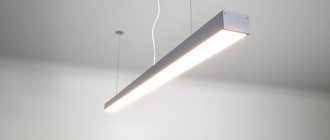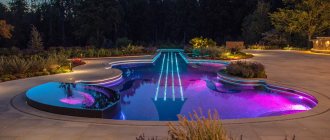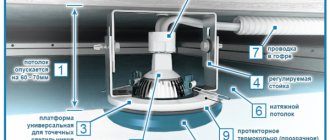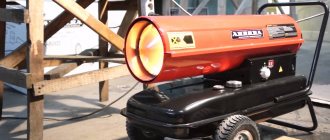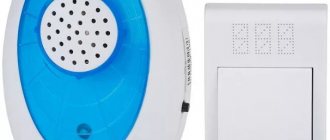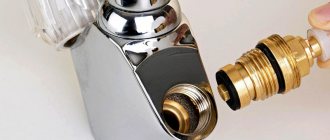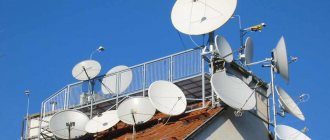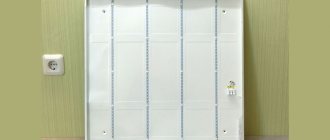What is a track lighting system for the home?
Bus track lighting systems are a unique design. It contains non-flexible busbar ducts, lamps, cable entries, a transformer, track hangers, as well as connectors with plugs.
One of the main structural elements is the busbar, which is a profile for mounting lamps. This is where the light sources are installed.
The busbar is made using steel, plastic or aluminum, and busbars are mounted in the inner part, which determine the type of product.
The device is often made in the form of a channel, metal string or cable.
Track luminaires are equipped with special contacts, thanks to which a connection is made to the busbar during installation.
The number of light sources can be different and is selected individually depending on the room that needs to be illuminated in an apartment, house, sales area and office.
Magnetic track system
Despite the fact that the very idea of track lamps is new, it has managed to be improved. A new functional solution is a magnetic tracking system.
To the advantages of a conventional track system, a magnetic one has added the ability to interact with the lamp as quickly as possible. With one simple movement, you can remove the lamp from the busbar and move it to another part of the system where lighting is currently needed.
The secret of such innovations is the presence of a special conductive board inside the busbar housing, to which the supply voltage is supplied. The power supply is mounted separately, and its required power is calculated based on the number of lamps. Therefore, it is recommended to purchase a power supply with a power reserve. This will allow us to increase the number of lamps in the future.
Track lamps are an excellent combination of high-quality lighting with simplicity and ease of use. An additional bonus is the stylish original design and the special effect created by the lines on the ceiling.
Scope of application
The task of any lighting system is to provide complete and high-quality lighting of the room.
It is important to consider that in a house or apartment, lamps can play not only the main, but also an additional (decorative) role.
And if in apartments and houses the level of illumination, which can be adjusted using dimmers, still comes first, then in entertainment complexes, shopping malls and cultural institutions, proper lighting plays a key role. This is where track lights come to the rescue.
In general, such structures are used in the following premises:
- Exhibition and sales halls;
- Cafeterias, bars, restaurants;
- Offices;
- Rooms in a house or apartment. Here such devices perform the function of additional lighting. Most often they are used when decorating the interior of a bedroom, living room or kitchen;
- Entertainment establishments (clubs).
Track systems have also found application in museums, shops, supermarkets and many other premises.
The use of such structures allows you to draw the attention of visitors to certain areas and draw attention to specific offers or products.
That's why track lights on busbars are becoming more common in retail spaces. Read on the topic - what lighting standards exist in premises.
What is track lighting
The main feature of track (or bus) lighting is the ability to move along walls and ceilings. Due to this, accent lighting of necessary objects is created and darkening of unnecessary ones. Very relevant in museums and shops.
Lighting for a museum, store
In apartment design, track light can be used to:
- zone large rooms and visually divide them by functionality;
- highlight work areas in the kitchen and other rooms where necessary;
- create a light accent on the elements of the room (highlight a bar or niche);
- highlight decorative elements on the walls.
Bus lighting for apartment interior
What should you know and consider when choosing track lights?
Today, many companies are engaged in the production of such devices. Here are just a few of them.
"Globo Lighting"
An Australian brand that is one of the five most famous manufacturers of lighting equipment. The main motto of the company is to produce products at an affordable price for the consumer.
This is a universal option for consumers who value quality products, but do not want to overpay for interior elements.
The most popular devices of the brand include:
- BARONI 56946-1 - LED lamp made of metal;
BARONI 56946-1 - Globo Kirogi 56453-1H - device for G9 lamp, power - 33 W, height - 1.2 m;
- Globo 54904-6 - glass and metal construction. Power - 66 W. Base type - E14.
BARONI 56946-1
"Citilux"
A company that began operations back in 1994 and during its operation has significantly expanded its product range.
Today, under this brand, all types of lighting equipment used in the interior of residential and office premises are produced.
The advantages of the manufacturer’s devices are the elegance of external solutions, simplicity of design and reliability.
Increased power is guaranteed thanks to the presence of several spotlights providing bright and stable light.
Popular models:
- CL561165 Citilux Accent. Power - 50 W, material - glass and metal. Base type - GU Length two meters.
CL561165 Citilux Accent - CL561141 Citilux Accent. Track lamp made of glass and metal, with a power of 50 W. Base type - GU Length - 2 meters.
CL561141 Citilux Accent
"Odeon Light"
An Italian company that has become famous in the market thanks to a wide selection of quality products, unique style and a huge range.
In the manufacturer's catalog it is easy to choose devices that are suitable for arranging any interior - both modern and with an antique effect.
The lamps produced by this company are of high quality and modern design, and the installation of suspended structures allows you to transform any room, be it a kitchen, hallway or living room.
The most popular models are 2075/6 ODL Odeon Light Medeo, as well as 2066/5C ODL Odeon Light Terza.
2066/5C ODL Odeon Light Terza
Other options for track lamps.
Types of lamps
Incandescent lamps. They are the cheapest, but have a number of disadvantages: they heat up and consume a lot. Not the best choice, fraught with high electricity costs.
Halogen. They give out a very cozy and sunny warm light, but also get warm. A buffer gas is added to them, and this can significantly extend the service life compared to conventional incandescent lamps.
Among such lamps there is a special category - metal halide , characterized by increased power. However, at home they are used extremely rarely. Mainly for commercial lighting of shop windows, at various exhibitions and museums.
LED. Significantly more expensive, but consume 5-10 times less electricity than halogen ones. In addition, they last a long time, heat up very little and can be of different light temperatures:
- warm - from 2000 to 3500K;
- neutral - from 4000 to 5000K;
- cold - from 5200 to 10,000K.
The same goes for energy-saving lamps. They also have similar effectiveness and approximately the same cost, and the only difference is a small amount of mercury vapor in the composition.
Which lamps do you prefer? It all depends on whether you want to have access to the dimming function (brightness adjustment). As a rule, this option is available to all halogen and incandescent lamps. But LEDs with dimming support cost a decent amount: if you have a lot of lamps in a track for your project, you will have to pay an amount quite comparable to the cost of the system itself.
Otherwise, LED lamps look like the most advantageous option in terms of price-quality ratio and output performance.
Important: when purchasing a track lamp, pay attention to whether it is equipped with a base that allows you to replace lamps. It can be threaded and then fit to it:
- incandescent lamps;
- LED
Or a pin one, which again is combined with LED lamps, as well as all types of halogen lamps.
Many models are of a non-removable type, so they need to be replaced along with the body. Of course, the option with a socket connector is much more convenient: you can always easily replace the light bulb and completely transform the lighting by choosing a different temperature.
Design features
As noted above, track systems consist of a group of devices, including busbars, lamps and other elements.
The system works on the principle of combining several light sources on one busbar, which acts as a mounting base and supplies voltage to the lamp.
Thanks to this design, it is possible to combine several lighting fixtures of the same type.
Track lights are connected by a common busbar, as well as a special support. Tires are made from various materials, but aluminum is most often used.
These devices have contact groups, thanks to which connection to track light sources is made.
Electrical mounting supports come in several types and can be selected taking into account the design of the system.
The most popular shapes are straight, flexible, L- or U-shaped, and also rectangular. At the end of each tire there is a plug that performs a decorative function.
Thanks to the use of different connecting elements, it is possible to place the system at different heights. In this case, track lights can be turned on and off separately.
The advantage of the design is that light sources of different power and design can easily be placed on one busbar, and the number of track lights can be changed taking into account the tasks.
The presence of a bus allows, if necessary, to adjust the location of light sources along the entire length of the system.
In this way, a change in the level of illumination in a certain part of the room, as well as the direction of the light beam, is achieved.
Types of Track Lighting
One or more groups of luminaires are placed on one busbar. Each such group (phase) can be powered separately, which makes it possible to adjust the illumination.
In a single-phase system, all lamps are connected to one copper busbar. This system is quite easy to install and maintain. With the help of connectors it is easy to give it the desired shape.
A single-phase system can be powered from 220 V or 12 V. If the track system is low-voltage, then a step-down transformer is included, which also needs to be mounted into a common network. In general, 220 V systems are no worse than low-voltage systems, subject to safety precautions.
Single-phase tracks are suitable for small rooms that do not need a large number of lamps.
If a large area is illuminated by a large number of lamps, then it is better to choose a three-phase system. Inside the busbar there are three copper busbars, on which the lamps are evenly hung. In this case, a phase wire is connected to the busbar itself from the network. The voltage is “transferred” from one copper busbar to another thanks to a special switch. The lamp also has a special wheel, the rotation of which changes the phase. The three-phase system operates on a voltage of 220 V. If desired, each core can be connected to a switch: in this case, three groups of lamps will operate independently of each other.
Connection diagram for a three-phase track system
Remember that luminaires for single-phase and three-phase systems are not the same. They cannot be replaced.
There are three mounting methods: surface-mounted, suspended and built-in.
For high ceilings, suspended structures are usually used. The track system is suspended on rigid plumbs or flexible cables.
Hanging mount
In the overhead version, the busbar is attached to the ceiling or wall.
Overhead mounting option
When using suspended ceilings, the track system can be built inside: only the lamps will stand out.
Built-in busbar
For very small rooms, it is more convenient to use strings or cables rather than busbars. Such systems are less massive and can be placed in almost any space. Strings, cables are insulated, low-voltage, flexible.
Track system on cables
How are products classified?
Track lights on a busbar can be classified according to the following criteria.
According to voltage they are:
- Low voltage;
- High voltage.
By light source:
- LED. In this case, LEDs are used, which have been gaining popularity in recent years. This is explained by the large resource and efficiency of the light source. Also, LED devices boast compactness and a modern appearance.
- Halogen. Here, more affordable halogen lamps are used, which are characterized by a low price. In practice, this advantage is almost the only one, because in other respects, halogen track lamps are inferior to LED and fluorescent “brothers”. These types of light sources are still used in the interior design of entertainment and retail spaces.
- Luminescent. The advantages of such lamps are their comparative efficiency and high level of illumination. But they are gradually losing popularity and are being replaced by more advanced LED track lights.
- Metal halide. In such designs, a special metal halogen lamp is used, which provides a powerful stream of light.
Metal halogen lamps
The main disadvantage is the long warm-up time, which forces you to look for other options. After some time, the light flux becomes “greenish”.
By type of busbar.
Based on this criterion, track systems can be divided into:
- Single-phase;
- 2-phase;
- 3-phase;
- Mini-track designs designed for a low voltage of 12 Volts are gaining popularity.
Depending on the number of phases provided on the track, it is possible to connect a different number of light bulbs - up to several groups, each of which is switched on individually.
By installation method:
- Superficial;
- Built-in.
As can be seen from the classification considered, track luminaires on a busbar can be selected for any type of room and for solving problems of varying complexity.
Tips for choosing track lighting
First, decide for what purposes you need track lighting: general lighting, spot accents, or all together. Based on your goals, calculate the number and type of light bulbs. Consider laying out tracks and powering the system.
When choosing system elements, pay attention to:
- manufacturer. German, American and domestic manufacturers working in accordance with GOST have proven themselves. The following companies can be distinguished: Arlight, Novotech, Arte Lamp, Maytoni. Some manufacturers of conventional lamps, for example Era, Feron also produce track lighting elements.
- luminaire characteristics: luminous flux (the higher, the brighter the light), power, color temperature (warm, neutral or cool), pulsation coefficient (less than 5%) and color rendering index (above 80).
- the expected static nature of the system: for frequent movements it is better to choose a lamp with a spring.
Advantages and disadvantages
Track lights located on the busbar open up endless possibilities when creating an interior.
Over the past few years, such a system has become truly in demand, and the lighting market is becoming saturated with new options for such products.
Installing track lights on a busbar in any room has many advantages:
- Possibility of creating directional lighting. By choosing a suitable design, it is possible to direct a beam of light to a point of interest in the interior, placing maximum emphasis on it. This is achieved by moving light sources along the busbar, taking into account the assigned tasks for lighting the room.
- Simplicity and versatility. The use of LED and other track lamps is an opportunity to provide basic lighting in a room or sales area, as well as organize additional lighting.
- Possibility to reduce or increase the area. Thanks to different combinations of lamps and the ability to change their arrangement, you can achieve any effect - give the room volume or, conversely, make it visually smaller.
- Ease of use. Track systems are well thought out, and their main features include the ability to move lamps, as well as the independence of different groups from each other.
- Possibility of mounting lamps of various shapes, dimensions and designs on one track. According to the manufacturers, technical characteristics may also vary, which in no way affects the capabilities and functionality of the design. If necessary, the system can be easily dismantled.
- Track lamps can be installed on any surface. No special skills are required to attach the busbar, so even a beginner can handle the job. So it’s not surprising that such designs are gaining popularity. The ability to change the direction of the device’s glow in any direction, which allows you to change the lighting accents after installation is completed.
- High installation speed. According to experts, it takes a minimum of time to attach all the parts. To simplify the task even more, it is worth using fasteners of the same brand. In this case, the stability and strength of the structure is ensured, and the track lights themselves cope with the task “excellently”.
- Low power consumption. This is especially true if the light sources are LED lamps, which are also distinguished by their durability and reliability.
- Original design. Many designers use such designs to solve various problems when decorating premises. The peculiarity of track systems on busbars is their versatility, so they fit perfectly into various types of interiors.
Track lights on the busbar remain cool even during prolonged operation (in the case of using LEDs).
In addition, they do not create additional noise and produce minimal electromagnetic radiation, which eliminates the slightest harm to health.
Taking into account the above, the conclusion arises about the relevance of using such a design for a home, office or any other room where basic or additional lighting is required.
Despite a number of advantages, track lights on a busbar also have a disadvantage - a high price, which many today cannot afford. But here everyone decides for himself what is more important to him - quality and convenience or savings.
Select standard track
Any track lighting system starts with the track itself. So what is this track? A track, also often called a bus, busbar, rail, sometimes even a rail and guide, is a frame in the form of a metal rail mounted on a ceiling or wall, on which track lamps are installed.
Track types
There are several track standards, but the most common are standard 1-phase tracks
and
3-phase tracks.
1-phase track systems are connected to a standard voltage of 220 V.
For each of these types, different installation options are possible:
- built-in - the bus is built into the plasterboard ceiling, due to which the bus is less noticeable and it practically does not protrude beyond the surface of the ceiling;
- suspended - the bus is suspended on special cables and seems to float in the air, this option is convenient if it is necessary to maintain a certain distance between the lamps and the floor, as well as in ceilings with open communications and multi-level ceilings;
- overhead - the tire is mounted directly on a flat surface of the ceiling or wall using self-tapping screws; this is the simplest and most common installation.
Types of single-phase busbar.
Particular care should be taken when purchasing cheap busbar trunking. Such versions use a very small thickness of metal, which is easily deformed not only when hanging, but also during standard installation of the track to the ceiling using self-tapping screws. In such tracks, in pursuit of cheapness, stiffeners are completely absent and the current insulation is of poor quality. And the current-carrying wires themselves are made of low-quality alloys and can begin to melt under increased load.
We offer to buy track lamps for single-phase busbars with delivery in Moscow, St. Petersburg and other cities of Russia.
3-phase track system
It can also be suspended on cables, built-in or overhead and connected to a regular 220V voltage outlet. A three-phase busbar makes it possible to turn on different categories of luminaires installed on one bus separately or together using two switches. This can be useful when you need to highlight some objects. For example, illuminate something with spotlights from one group for a short period, and the rest of the time turn on another group of track lights for general illumination of the space. Also, on a 3-phase track system, you can turn on all the lamps at the same time by operating 2 switches.
Types of three-phase phase track.
Each of the tracks presented above can be presented in various variations depending on the manufacturer. Remember that luminaires can be interchangeable only within the same track standard. That is, lamps that fit a three-phase busbar will not work on a single-phase track system. Although there are exceptions when it is possible to replace a single-phase adapter on a lamp with a three-phase one and vice versa, it is better not to neglect the general rules when arranging systems of track lamps. However, within the same standard this is not a problem, you can change the track lights whenever you want.
The busbar is produced in the form of straight rails with a length of 1 to 3 meters. They can be shortened, adjusting the size to the desired shape of the planned track system. Then the individual tracks (rails) are connected to each other using linear, angular and other components into a single structure. The shape and cross-section of tires can have different appearance, design, shape and size, all depending on the manufacturer. The cross section of a 1-phase track is smaller in size compared to a 3-phase one.
It should be noted that despite the voltage of 220V, when used correctly, track lighting systems are completely safe.
Installation and connection features
The installation of track LED lamps, as well as the fastening of the busbar, raises many questions.
The peculiarity of the designs is that they are sold as a kit, which includes a power supply and everything necessary for mounting.
If you purchased a structure without such a block, installation and connection are carried out according to the following algorithm:
- Turn off the power supply in the house or apartment where the work is being done. Check with a multimeter or other device that there is no voltage;
- Place light sources on the track body, then connect the contacts of the lamps to the contact connections intended for this;
- Route the edges of the cables to different sides of the busbar. Remember that each wire has its own color, which makes it easy to identify the phase, neutral wire and ground.
READ ON THE TOPIC: What are NShVI lugs for crimping wires.
The installation algorithm is simple. The task is simplified by the fact that there is no need to cut and connect the cable.
The next stage is the installation of LED lamps directly on the busbar.
The principle here is the same as in the case of spotlights:
- Place the frame. It can be secured using brackets or hanging chains. It is allowed to suspend the system using special cables;
- Connect the electrical wiring. Route the wires to the places where you plan to install the track;
- Combine wires of the same color;
- Insulate all exposed conductors at the connection points to avoid a short circuit in the network;
- Install the previously assembled track light. To solve the problem, insert the electrical adapter into a special groove (provided for by the design of the device). When installing, listen and stop pressing when a click appears - this indicates that the device is securely fixed;
- Adjust the incidence of the light beam, focusing on the interior elements of interest.
It is worth noting that during the process of installing and connecting LED track lights on a busbar, you need to pay attention to the presence of adapters for connecting power on the left and right sides.
Popular with readers: how to properly light a bathroom, photos, design.
Product classification
Track with LED lamps
Track lighting fixtures can come in a variety of types and shapes. -* Lighting fixtures placed on the busbar, depending on the light source, are of the following types:
- with LED lamp. Such lamps are more popular, since the LED light source is recognized as very economical in terms of energy consumption. In addition, they are compact and take up little space;
- with a halogen lamp - the cheapest of all the available varieties. But in other respects they are inferior to fluorescent and LED light sources. They are most often used in shopping and entertainment centers;
- with fluorescent lamps;
- with metal halogen lamp. They give excellent light, but take a long time to warm up. Over time, the luminous flux from such lamps acquires a green tint.
Also, products may differ in the type of busbar. Depending on this indicator, track systems are:
- single-phase;
- two-phase;
- three-phase;
- mini track systems at 12V.
Depending on how many phases the track has, one, two or three groups of light bulbs can be connected to its body, which will turn off and on completely independently of each other. As you can see, you can choose a track system for absolutely any room and organize high-quality lighting for the room.
Results
Track lights on busbars are a real modern design. They are easy to install, differ in functionality, provide high-quality lighting and open up a lot of possibilities when arranging the interior.
As for the high price, it is not a hindrance for people who put comfort and safety above money.
Remember that with the help of track lights you can improve the quality of lighting and make it more practical. At the same time, the original design of the systems will give the room such an important “zest”.
Advantages of track lamps
Versatility - can be installed in any room.
- Cost-effective – it is possible to illuminate only the necessary space. By installing LED lamps, you get additional savings in the form of minimal energy consumption.
- Mobility – by changing the position of the lamp, it is possible to direct the lighting and place light accents.
- Easy installation - installing the system is not difficult. Quick replacement available for select models.
- Aesthetics – the unusual stylish design of track lamps makes them relevant in fashionable interiors.
- Strength, reliability and durability. In their production, modern safe materials are used, which not only provide a long service life, but also do not require special care.
Description of track lighting systems
Before choosing a suitable lighting device, you need to understand how it works. The peculiarity of such lamps is the ability to be fixed on a busbar and moved along it. Thanks to this design, light sources can change their location, as a result, exactly the detail or area of the room that needs to be emphasized is illuminated. One can note the versatility of such lamps, which fit into any interior. The choice of track lamp depends on how exactly you plan to use the system.
The components of the system are usually the following:
- conductive busbar;
- spotlights;
- stubs
- rotating mechanisms (most often built-in).
Track lamps of the latest generations have many advantages, including:
- simple but functional and reliable design;
- ability to direct light;
- creating the effect of spaciousness in the room;
- simple controls;
- easy installation;
- many varieties and designs;
- variety of technical characteristics;
- the ability to create various lighting solutions;
- safety in operation, minimum heating during operation, absence of electromagnetic waves.
Application in bars and cafes
Perhaps, the pros and cons of this type of lamps are most clearly revealed in the entertainment sector - most bars are implemented with just such lights. You understand, in a bar it is not necessary to have one hundred percent visibility and bright lighting there is also not necessary; it is more important to create a pleasant atmosphere and a small amount of light necessary so that visitors can calmly eat and drink, enjoy life and communicate.
LED lamps: detailed description, application features and review of the best manufacturers- Pendant lamps - examples of installation, placement and design of light sources with your own hands (110 photos)
Table lamp: design, placement features and installation ideas
In such locations, track lights have gained enormous popularity - they are easy to install and illuminate most of the room at once, they look quite attractive and do not distract the visitor to too bright areas of the cafe or restaurant.
However, these lamps also have disadvantages associated with a more complex installation scheme, space requirements and cost.
Let's start with the installation difficulties - this is not a single lamp that can be screwed to the ceiling and forgotten about it, the design is more complex, there are a lot of details in terms of choosing models, installing them and connecting to a common network.
Installing such a complex system without an electrician will be problematic, that’s a fact. Plus, even if you know how to install a track lighting system, no one guarantees that you will have enough space - you need to place the lamps on cables at a certain height, which is not entirely possible in rooms with low ceilings.
Plus, if you want to direct the light in the room to different areas, then you need to remove obstacles in the path of light - all chandeliers and lamps will have to be removed.
Design features
Device design
Track lighting systems are devices consisting of lamps placed on a busbar. They are used to illuminate a wide variety of rooms. If earlier they were often found in trading floors, today they are actively placed in houses and apartments. Track lamps operate on the principle of combining several similar lighting devices into one electrical installation system (busbar).
The individual tracks are connected to each other using a busbar, as well as special supports. Busbars are electrical modules made of aluminum alloy. On the busbars (busbar) there are groups of contacts that are used to connect track-type luminaires to the system. It is also worth noting that electrical mounting supports can have several varieties, which differ depending on the design features of the system and come in the following varieties:
Transformer
- cruciform;
- flexible;
- straight;
- U-shaped;
- in the shape of the letter "G";
- rectangular.
Each tire at its end contains a plug, which performs a utilitarian and decorative function. Bus lighting systems usually include:
- lamps. In them, the light source can be a wide variety of light bulbs;
- conductor;
- transformer;
- connecting elements;
- suspension devices.
With the help of connecting elements, such a system can be placed at any height you need. At the same time, you can turn on and off the lamps included in this system separately. Lighting fixtures of various designs and power levels can be placed on one busbar. Moreover, their number, depending on needs, can vary, which significantly expands the scope of application. Such bus structures make it possible to easily move lamps along the entire system, thereby changing the direction of light and the degree of illumination of a particular area of the room.
System installation
You can purchase a ready-made structure or assemble it yourself using the components you like. The finished set consists of a bus wire, a mounting stand, lamps and related components. Installation is carried out with the electricity turned off, in the following sequence:
- A structure is assembled from individual elements, which is fixed to the ceiling surface with hangers or brackets. The wires are routed and connected according to the shades of the insulating braid;
- lamps are connected to busbar wiring and placed randomly;
- a track adapter is mounted, after which the system is connected to the network and the lamps are distributed in directions.
How to connect?
Connecting the system begins with installing the lighting system on the housing and then connecting the contacts to each other. To facilitate the process, all cables located at the ends of the track system have their own shade corresponding to grounding, phase or neutral. It is noteworthy that the cables are ready for use and cutting off the braid is not required
Before starting installation, you must pay attention to the difference between adapters for right-hand and left-hand connections.
Connection algorithm:
- The frame is placed on fastenings (brackets for mounting the system on the wall and cables or chains for mounting ceiling lighting).
- At the place where the lamp is attached, the wiring contacts and wires that match in color are released and connected to each other. After which they are insulated with tape or braid.
- The lamp is attached to the desired location by placing a groove in the electrical adapter. You will hear a click when the device is fully locked.
- The lamp is placed on the selected location of the busbar and the angle of inclination is adjusted.
For more information on how to connect a track light, see the following video.
